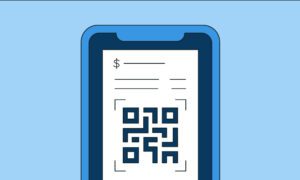Data security is the business of every business. Even small companies must be mindful of the security of their computers and networks. No business does not have data that is not worth protecting for them to carelessly operate unsecure digital devices.
According to the 2019 Internet Security Threat Report by Symantec, those in small organizations are more likely to be the subject of cyberattacks. Email threats, in particular, tend to target the employees of small businesses or organizations with around 48% of malicious email attachments associated with office files. Unfortunately, a study conducted by the US National Cyber Security Alliance found that around 60% of the small businesses that have suffered a cyberattack go out of business within six months after the attack. The same study found that small businesses spend an average of $690,000 to clean up in the aftermath of a cyber assault.
Cyber threats continue to rise largely due to greater internet penetration and the use of more digital devices. Most people are now using smart mobile gadgets that become targets for cyber criminals. There’s also the growing use of IoT devices and the popularity of telecommuting and BYOD policies. All of these make people knowingly or unwittingly store their data in digital devices, which attract the interest of hackers and tech savvy criminals.
In light of all of these, it’s only logical to be aware of best practices in ensuring data security. Business owners and managers can benefit from the following guide.
1) Use multiple security solutions
Business data exist in various forms and platforms. Hence, attacks can be in different types and methods. This means that a sensible data security solution should be multifaceted and multi-layered. It’s not enough to have an antivirus software in your computers; you also need other measures including the use of two-factor authentication when accessing accounts, the installation of a firewall, the use of SSL connections, and the encryption of stored data.
If your malware protection system fails to detect and block potent viruses or spyware, for example, the malicious software that make it to your computers cannot create disastrous consequences if the data they read and steal are encrypted. Likewise, they will not be able to transmit data if you have a firewall that prevents unknown apps from going online.
2) Implement a solid data security policy
Aside from using the right security solutions, it’s also important to ascertain that the entire organization follows rules, regulations, and protocols when it comes to handling business data. The following ideas should be helpful:
- There has to be a system for classifying data and making sure that no sensitive information leaks out and is stored unencrypted.
- Make sure everyone uses strong passwords for their company accounts.
- Regulate internet use. Prevent employees from frequenting unsafe sites, especially those that compel them to turn off security features to gain access. Access to dubious sites must be prevented as these sites can become sources of malware infections, or they can be used for phishing.
- Update all software or applications. Software updates are not only released to add new features. They also include patches or fixes to address security issues and bugs that prevent the software from working as intended.
- The devices used by telecommuters and those in BYOD arrangements should also be covered by the data security policies of a company. They can’t just use bootlegged apps and inauthentic operating systems just because they are not provided by the company.
- Create a system to enable prompt security incident reporting. If someone notices a security lapses or vulnerabilities, they must be encouraged to inform the appropriate departments or officers about them.
Concern for data security is not only for big companies. Even startups and small ones with few employees should already be aware of the importance of securing business data. In the age of the internet and ubiquitous digital devices, it’s easy to fall prey to sophisticated tactics to obtain data that can be used to steal from a business or (for competitors) to get undue advantage.
3) Test your preparedness for a cyber attack
It’s difficult to fully grasp the extent of cyber threats by simply reading the theories. It helps to have a simulation of what can possibly happen. For this, you can turn to cyber security companies for assistance. They can conduct penetration testing to thoroughly evaluate the risks your company is facing, test your readiness in facing these risks, and provide recommendations to prevent worst case scenarios.
Penetration testing aims to realistically determine all vulnerabilities of a company’s cyber security system. It generally involves five stages, starting with the planning and reconnaissance phase down to the scanning process, the simulation of cyber attacks (and gaining access), maintaining access, and the analysis and recommendation stage.
Penetration testing may include internal and external testing, blind testing, double-blind testing, and targeted testing. Internal testing means checking for possible exploits that can be conducted internally or behind the firewall. External testing is about attempting to gain access to the computers or local network from outside of the firewall. Blind testing, on the other hand, entails the use of hackers who are given only the name of the company to target. It’s up to them to find their way into the computers of the given target. For targeted testing, the hacker and cyber security personnel of a company work together to examine vulnerabilities—the hackers try to get in, while the security team do their best to keep the hackers out.
4) Sensitive data backups must be encrypted
Data backups are some of the most common targets of cyberattacks. If you are generating backups for critical information, make sure that you encrypt them. This need for encryption is particularly important if you are storing your backups on the cloud. It is a preventive measure that reduces the instances of successful data theft. It prevents anyone from making use of the data they illegally obtain.
Examples of sensitive data that require encryption are usernames and passwords, business plans and strategies, product concepts, and client/customer information. Client data, in particular, should be handled with utmost care. Leaked customer information (to the public) is a major problem that results in the loss of trust and credibility, something that is extremely difficult to recover.
In Conclusion
Every business needs to understand data security and implement measures to safeguard their data. It’s not going to be an easy and straightforward process, but it’s not too difficult to achieve. The pointers discussed above should serve as a good starting point for business owners or managers who want to properly secure their information not only from external attacks but also from negligence and collusion.



















































